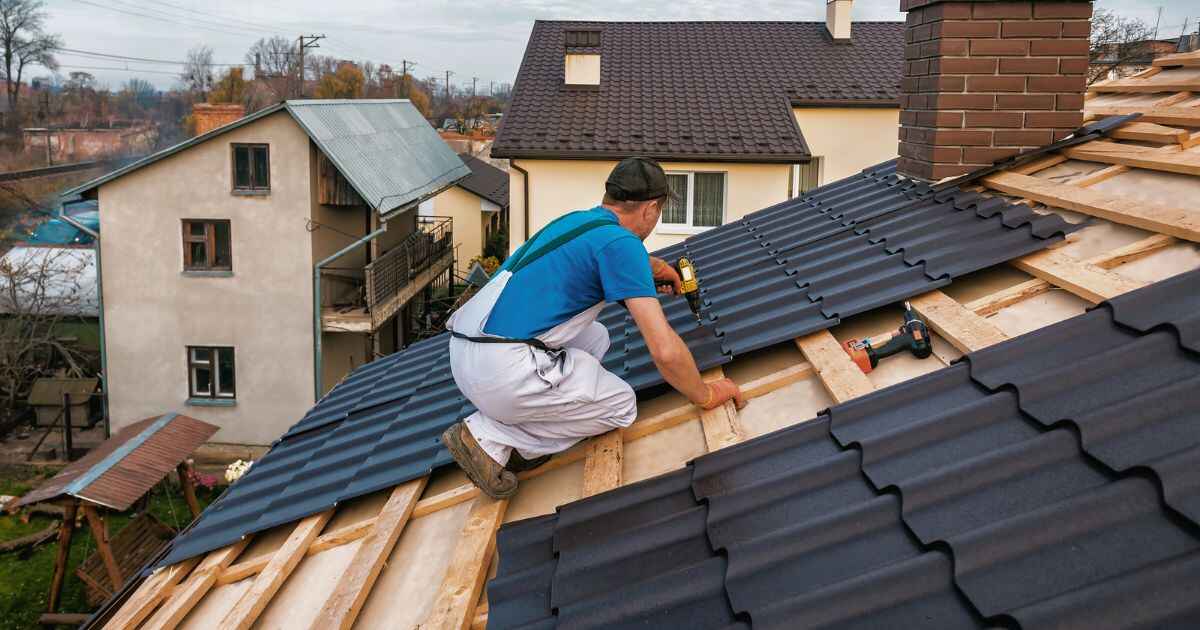When selecting the best underlayment for roofing, it’s essential to consult with a professional roofer who can consider factors like weather exposure, durability, and cost-effectiveness. Asphalt-saturated felt is a budget-friendly option but may be less durable over time, whereas synthetic underlayment offers superior tear resistance albeit at a higher cost. For a well-rounded option that balances strength and weather resistance, rubberized asphalt underlayment is often recommended by professional roofers. Factors such as UV exposure, installation ease, and moisture protection are crucial considerations in choosing the proper underlayment for your roofing project.
Tailoring the choice to your specific roof type—metal, asphalt shingles, or other—can optimize performance. Each underlayment type has pros and cons, so choosing wisely ensures your roof’s longevity and protection.
Types of Roofing Underlayment
When selecting roofing underlayments, we typically categorize them into three main types based on their composition and intended use. The first type is asphalt-saturated felt, which is commonly used due to its ease of installation and cost-effectiveness. However, it may offer a different level of durability than other options. The second type is synthetic underlayment, known for its superior durability and resistance to tearing. This type usually comes at a higher cost but provides better protection.
Lastly, rubberized asphalt underlayment combines the benefits of asphalt-saturated felt and synthetic underlayment, offering excellent durability and weather resistance. When choosing the best underlayment for your roofing project, consider the installation methods, durability, cost, and environmental impact.
Pros and Cons of Each Type
Considering the various types of roofing underlayment available, each comes with its own advantages and drawbacks that are important to weigh before selecting. Here are the pros and cons of each type:
1. Asphalt-Saturated Felt:
– Advantages: Affordable and widely used.
– Disadvantages: Prone to tearing and less durable than other options.
2. Rubberized Asphalt:
– Advantages: Excellent waterproofing capabilities.
– Disadvantages: More expensive than traditional felt underlayment.
3. Synthetic Underlayment:
– Advantages: Lightweight, durable, and resistant to tearing.
– Disadvantages: Higher initial cost compared to felt underlayment.
4. Non-Bitumen Synthetic Underlayment:
– Advantages: Superior resistance to UV rays and harsh weather conditions.
– Disadvantages: This can be costly and may only be necessary for some roofing projects.
Factors to Consider When Choosing
In our experience, one key aspect to carefully evaluate when selecting the best underlayment for roofing is the specific weather conditions prevalent in the area. Different materials offer varying levels of protection and insulation. Consider material options based on the climate for best performance. Moreover, weighing cost-effectiveness is essential. Compare the initial investment with long-term benefits to make an informed decision. The installation process should also influence your choice. Some underlayments may require specialized installation techniques, impacting overall project costs.
Finally, conduct a durability analysis. Evaluate the underlayment’s ability to withstand environmental factors like UV exposure, moisture, and temperature fluctuations. These factors will help you choose the most suitable underlayment for your roofing needs.
Recommendations for Different Roof Types
We have found that selecting the appropriate underlayment is crucial for different roof types to guarantee lasting protection and performance. Specific underlayment recommendations can optimize the roof’s functionality for other roofing materials, such as metal roofs and asphalt shingles. Here are some key suggestions:
1. Metal Roofs: We recommend using synthetic underlayment for metal roofs due to its durability and resistance to tears and punctures.
2. Asphalt Shingles: When installing asphalt shingles, it is best to use felt underlayment, which provides good protection against water infiltration and enhances the shingles’ longevity.
3. Proper Ventilation: Ensure adequate ventilation under the underlayment to prevent moisture buildup.
4. Consultation: Consult a roofing professional to determine the best underlayment for your roof type.
Other Roofing Tips:





